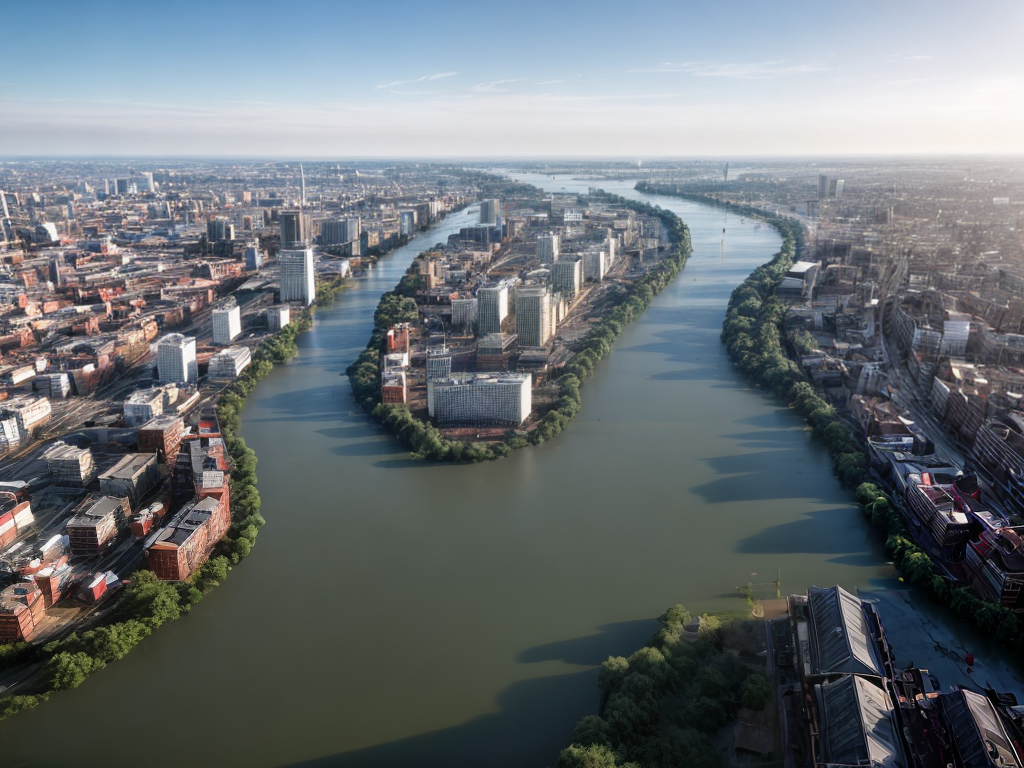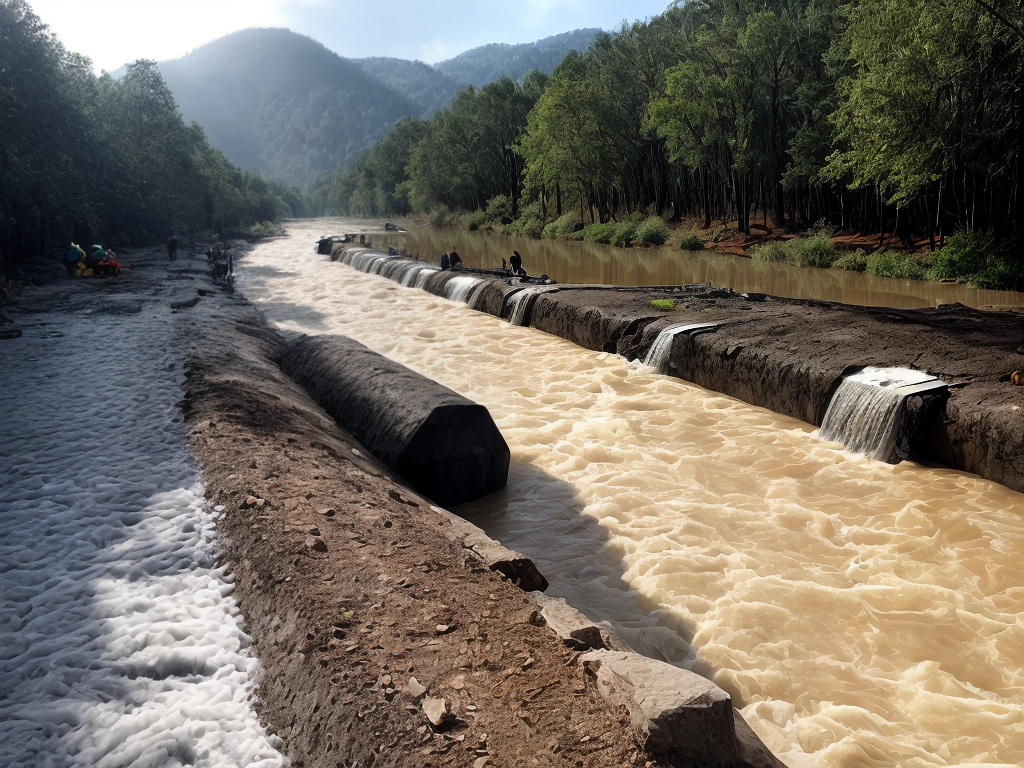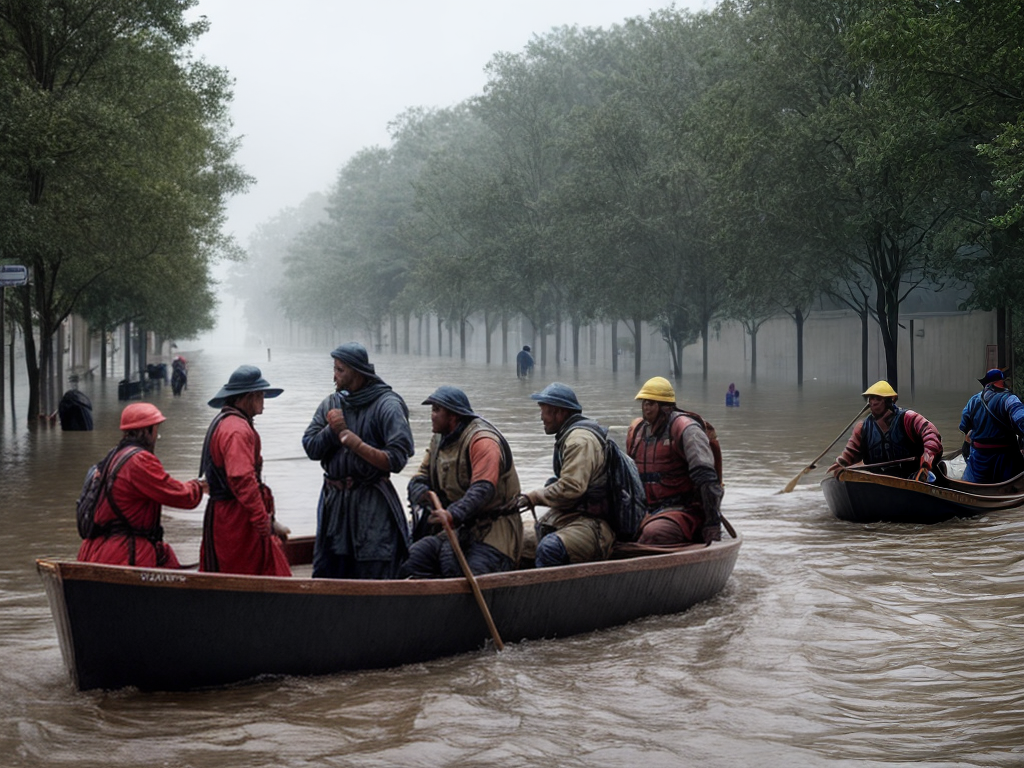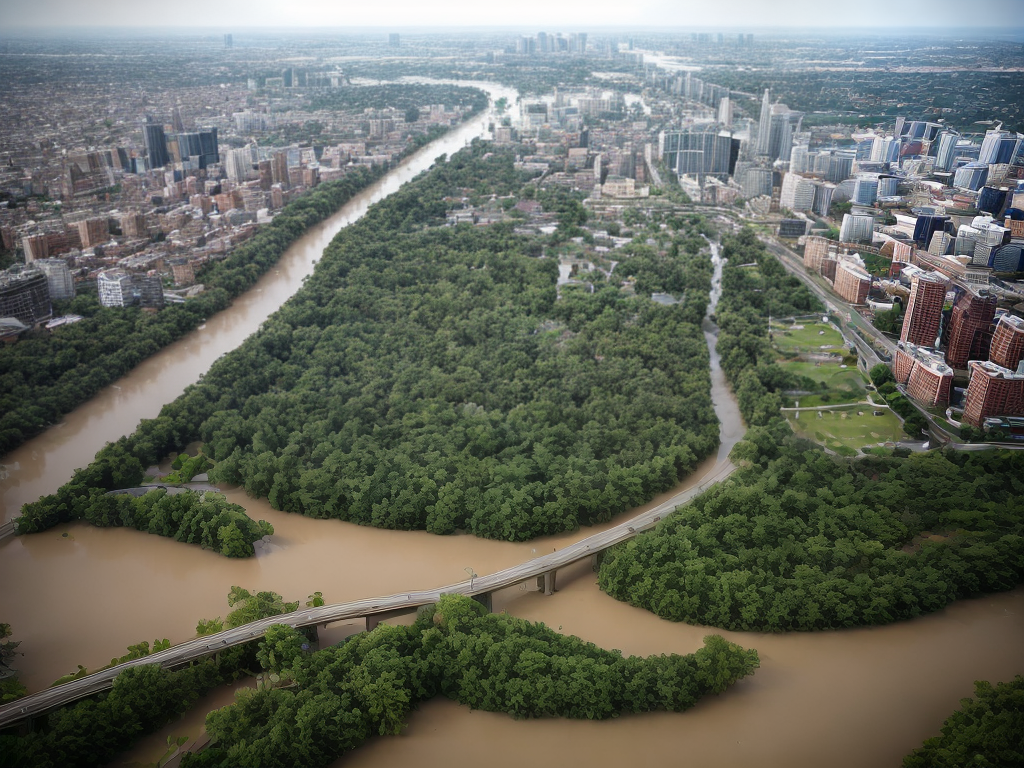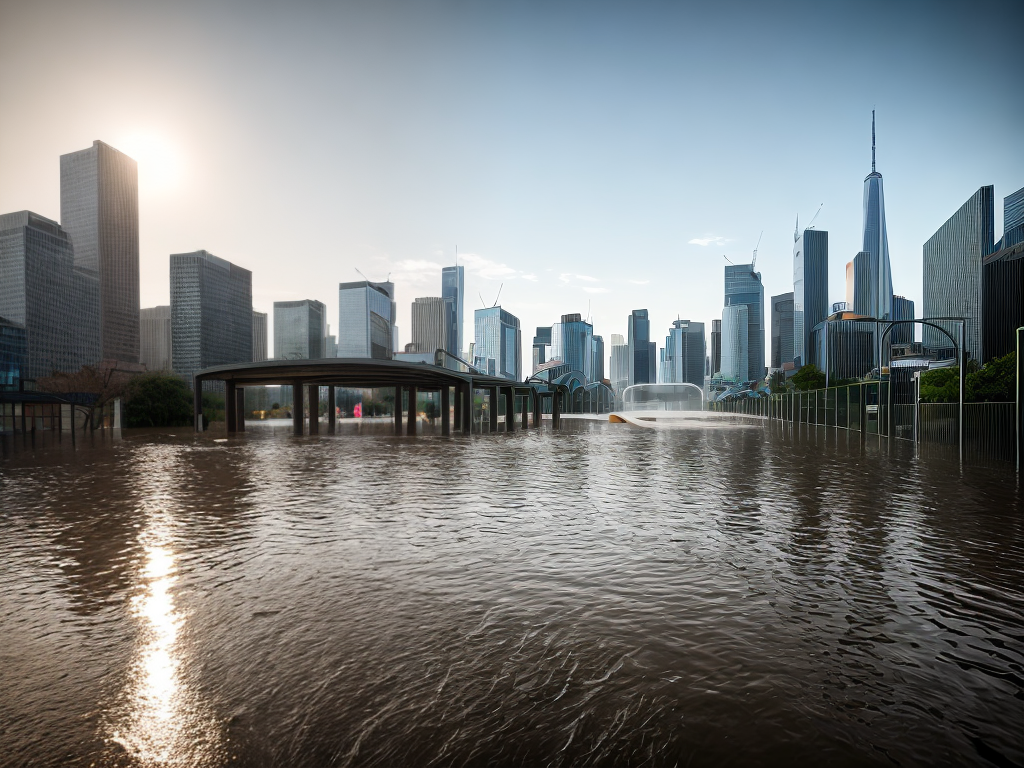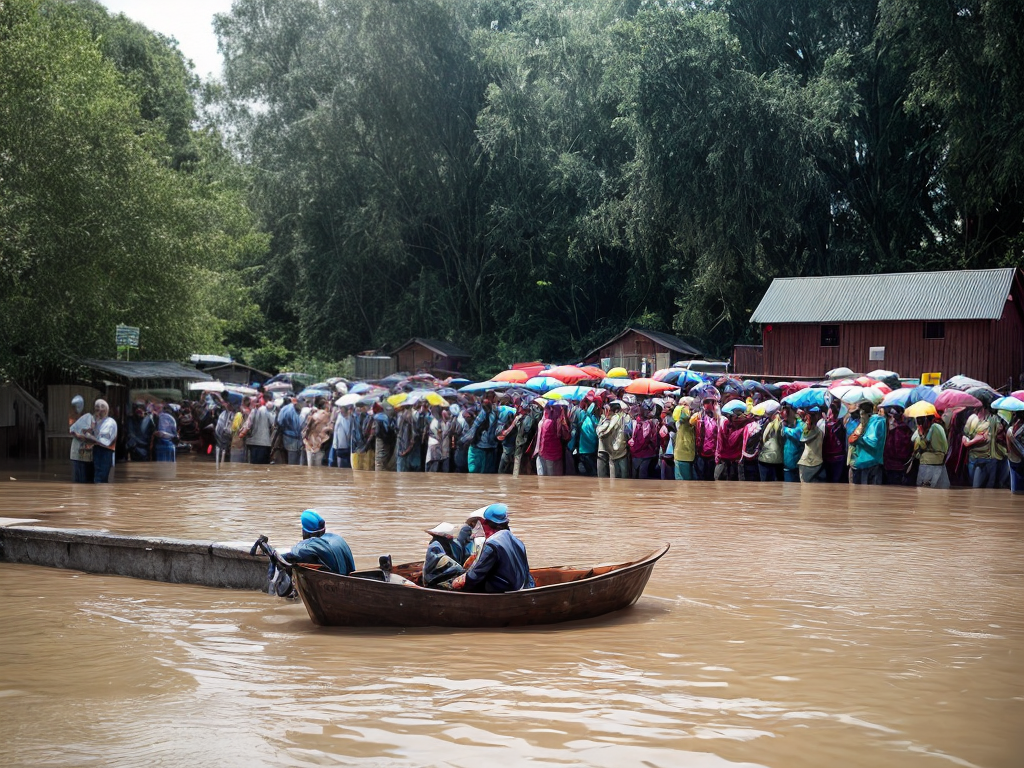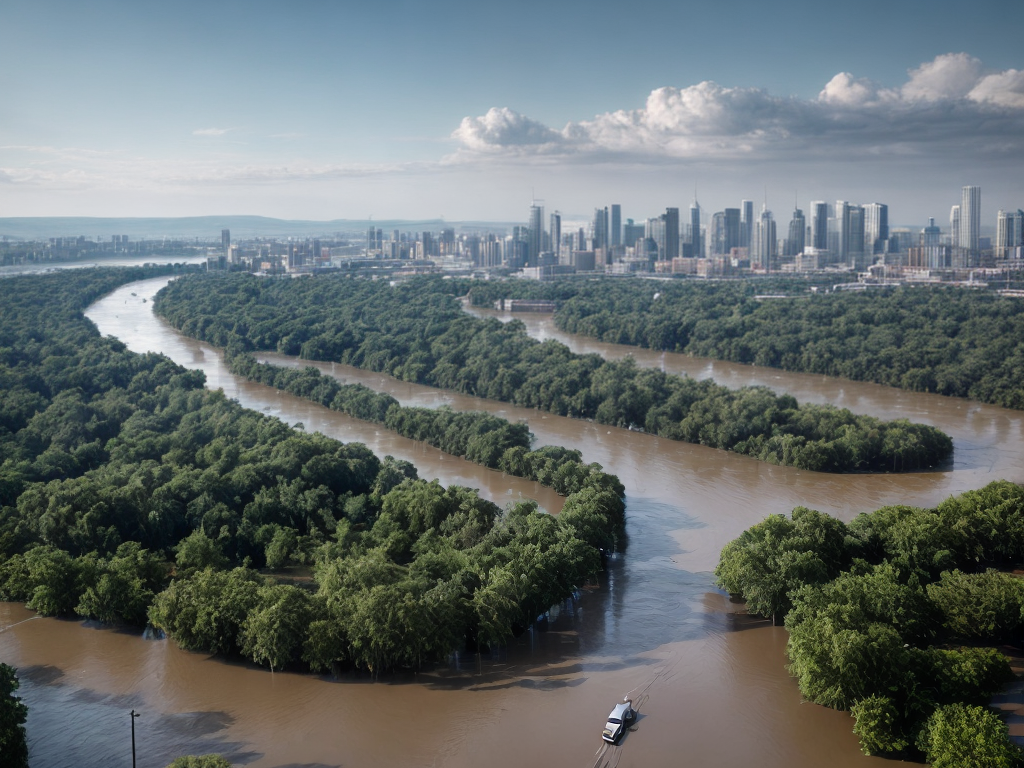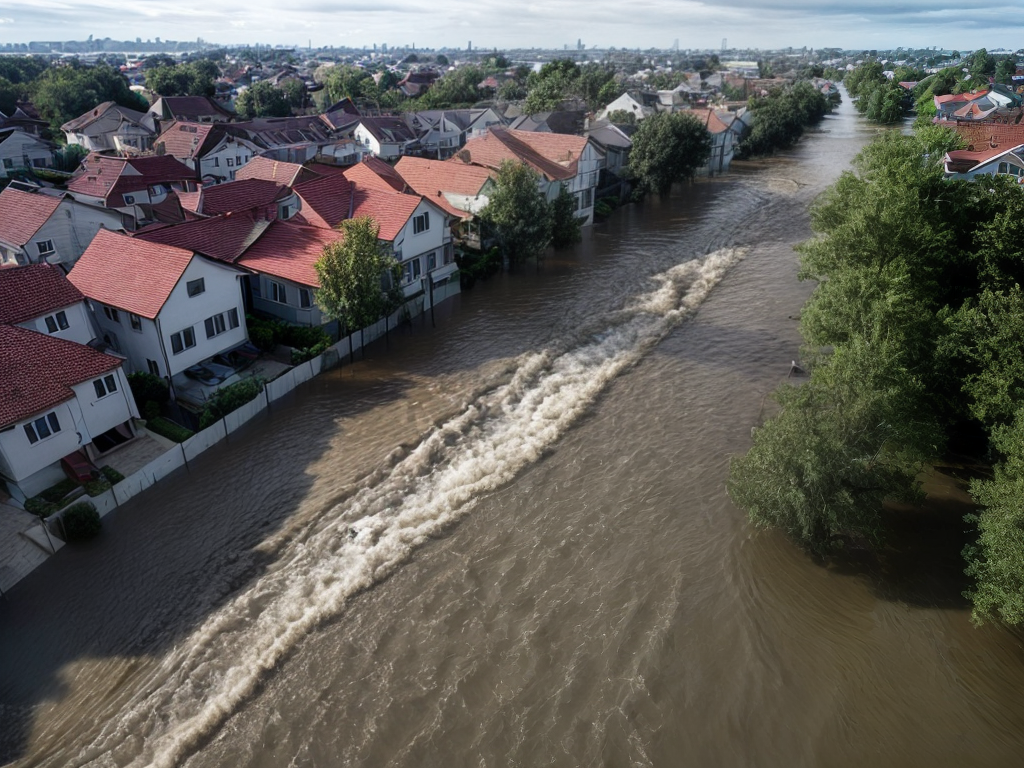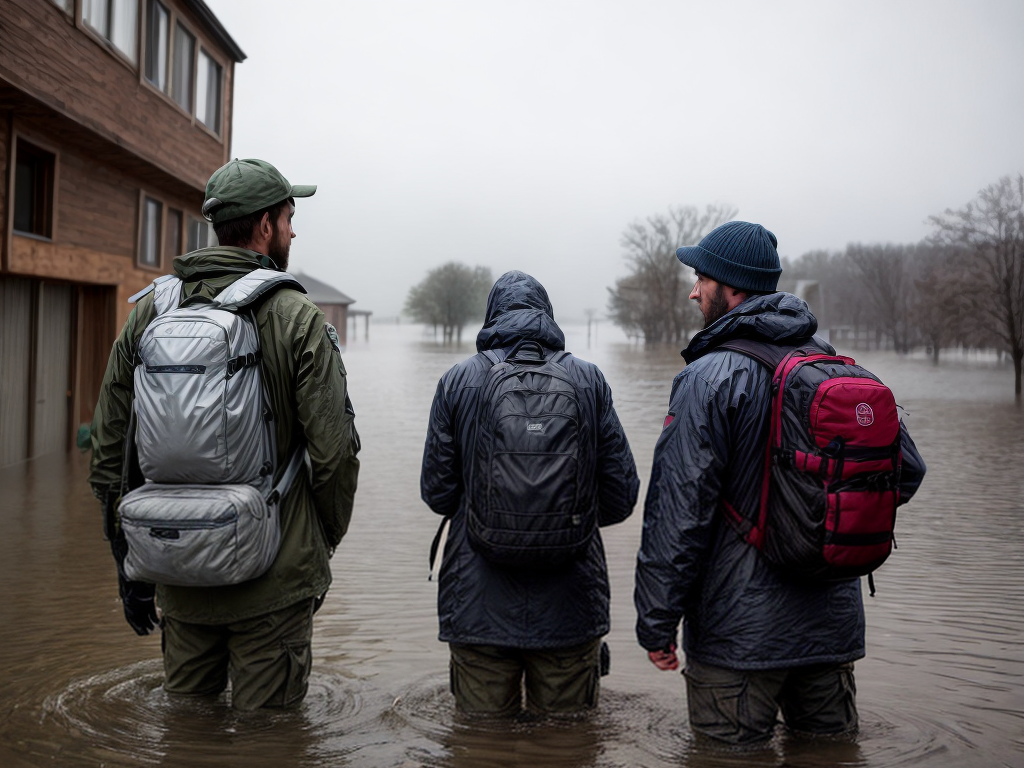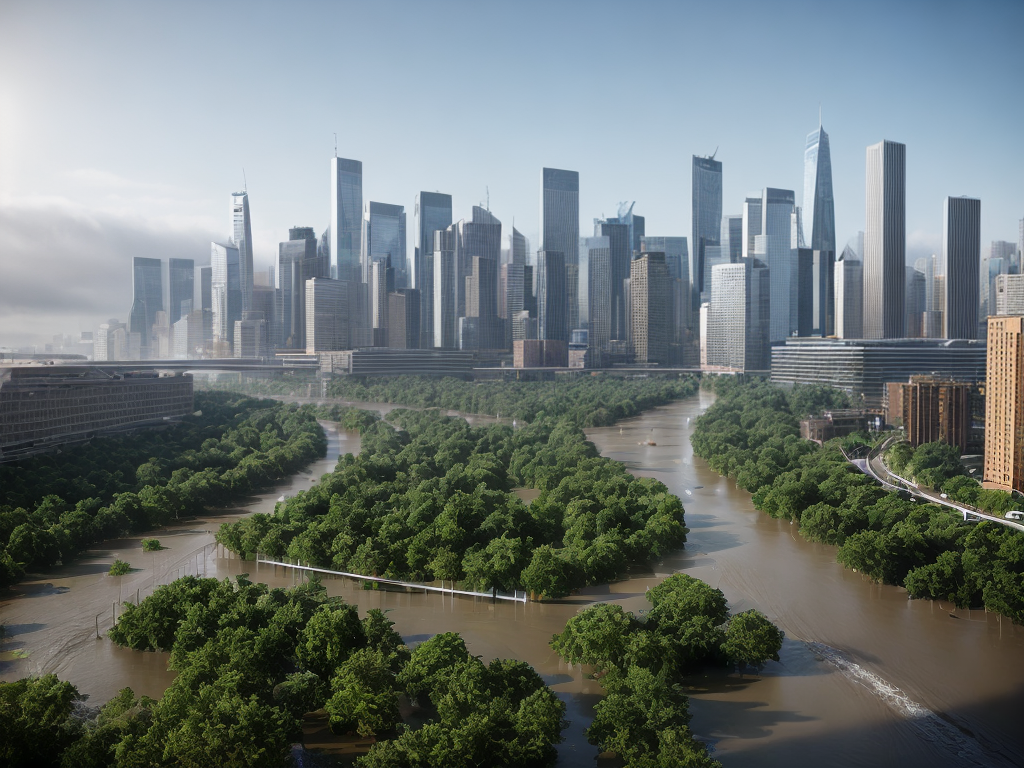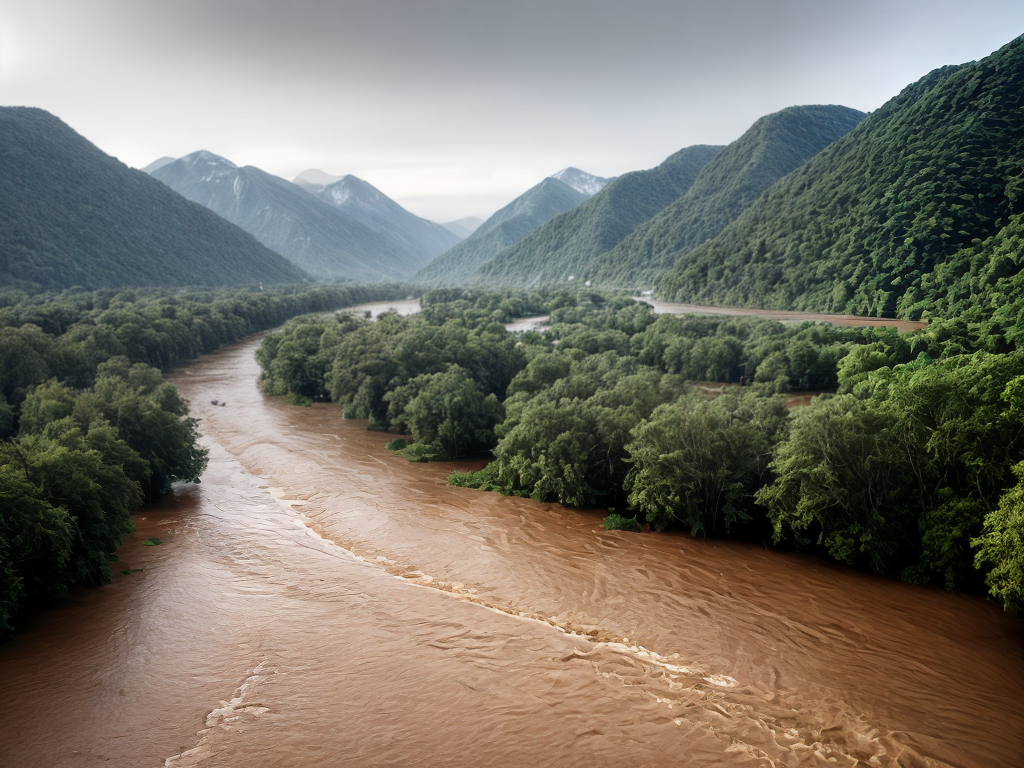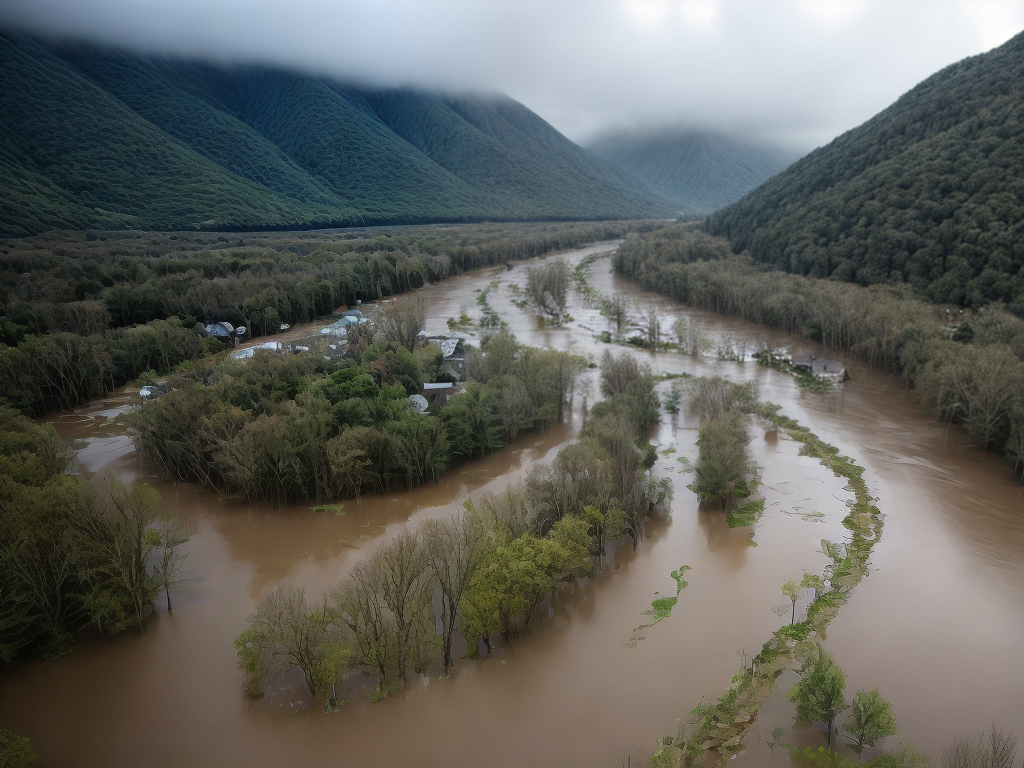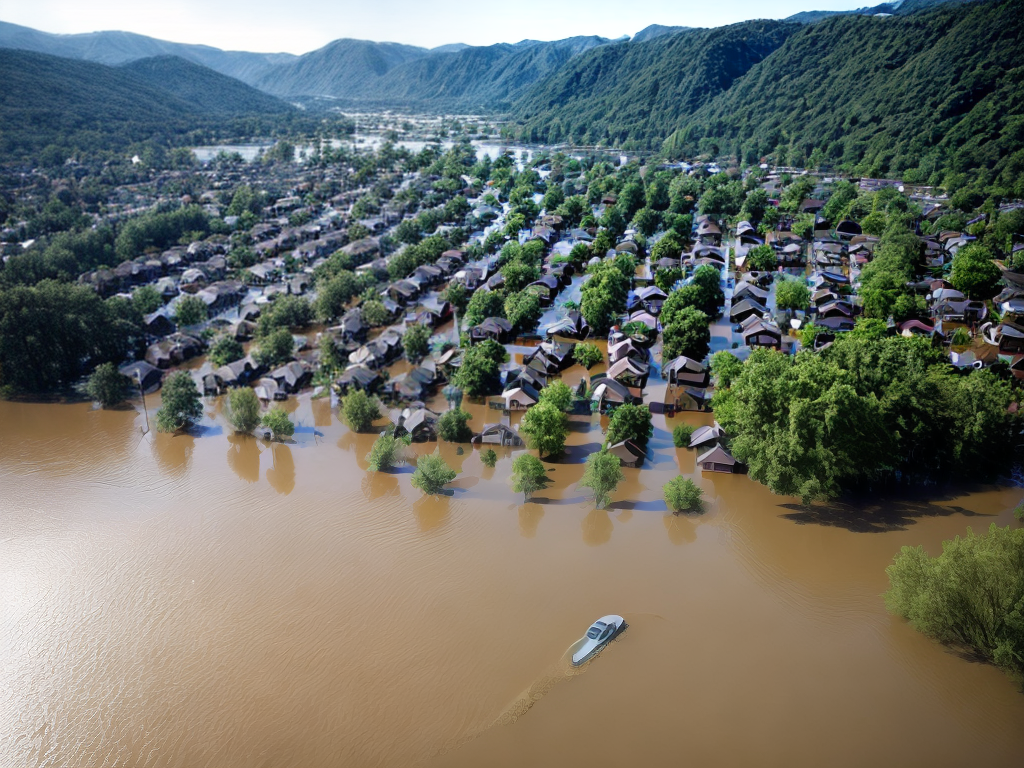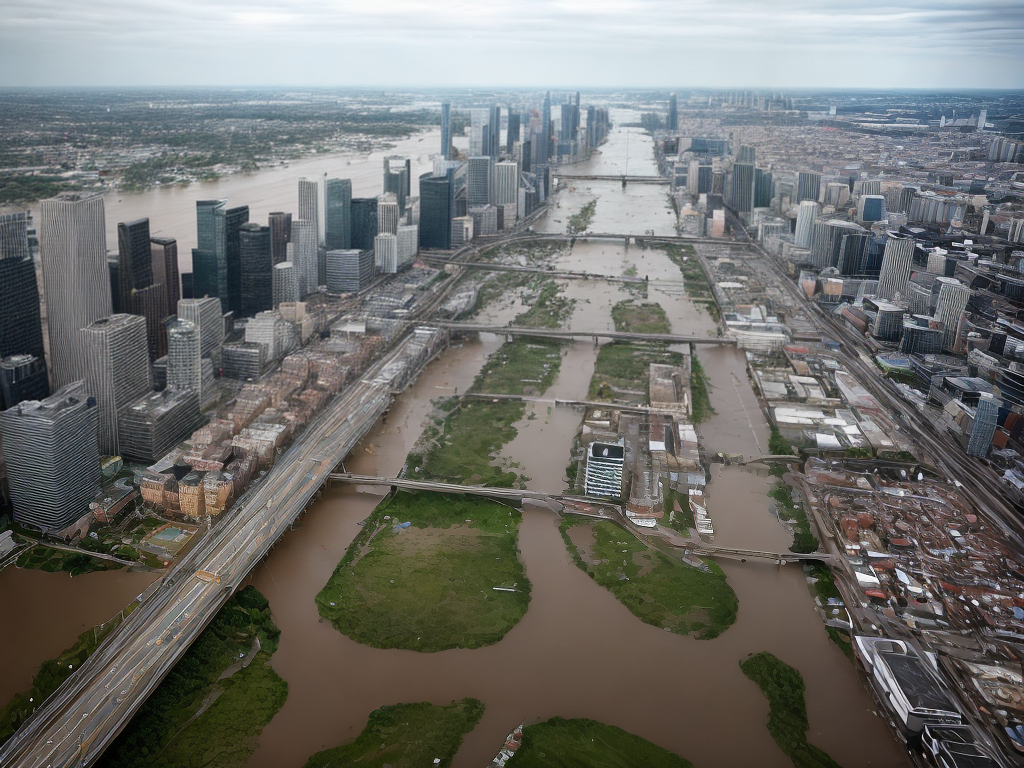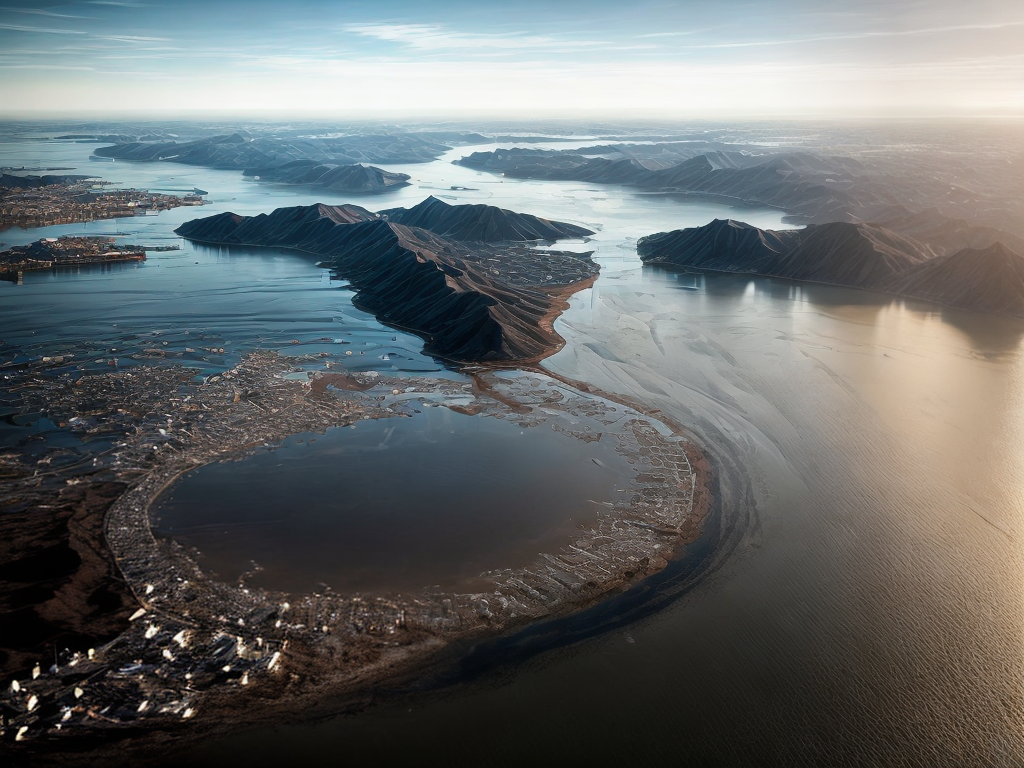
Like a ticking time bomb, global warming has set in motion a chain of events that threatens to reshape our planet as we know it. As temperatures soar and ice melts at an alarming rate, the world’s oceans are swelling, causing sea levels to rise. But what does this mean for us? How will it affect our coastal communities and increase the risk of devastating floods? In this discussion, we will explore the intricate web of cause and effect that links global warming to rising sea levels and flood risks, shedding light on the urgent need for action and the potential solutions that lie ahead.
Key Takeaways
- Increase in greenhouse gases, primarily from burning fossil fuels and deforestation, contributes to global warming and the rise in sea levels.
- Melting ice caps and glaciers, along with thermal expansion of seawater, are causing sea levels to rise, posing risks to coastal communities and ecosystems.
- Coastal communities are vulnerable to flooding, erosion, and infrastructure damage due to rising sea levels.
- Mitigation strategies such as nature-based solutions, green infrastructure, coastal zoning, and relocation can help minimize the impacts of rising sea levels and flood risks.
Causes of Global Warming
The causes of global warming can be attributed to human activities and natural factors. The Earth’s temperature is rising due to the increase in greenhouse gases, such as carbon dioxide and methane, in the atmosphere. These gases trap heat from the sun, causing the planet to warm up. Human activities, such as burning fossil fuels for energy and deforestation, are major contributors to the increase in greenhouse gases.
Burning fossil fuels releases large amounts of carbon dioxide into the atmosphere, as well as other greenhouse gases like methane. This is primarily done through the combustion of coal, oil, and natural gas for electricity generation, transportation, and industrial processes. Deforestation, on the other hand, contributes to global warming by reducing the number of trees that can absorb carbon dioxide through photosynthesis.
Natural factors also play a role in global warming. Volcanic eruptions, for example, release large quantities of carbon dioxide and other gases into the atmosphere. While these emissions are significant, they are relatively small compared to human-caused emissions. Additionally, variations in solar radiation and volcanic activity can lead to short-term climate fluctuations, but they do not account for the long-term warming trend that we are currently experiencing.
Understanding the causes of global warming is crucial for finding innovative solutions to mitigate its effects. By reducing greenhouse gas emissions through clean energy sources, energy efficiency, and sustainable practices, we can work towards stabilizing rising temperatures and protecting our planet for future generations. It is up to us to take action and make the necessary changes to combat global warming and create a more sustainable future.
Melting Ice Caps and Glaciers
Melting ice caps and glaciers pose a significant threat to our planet’s future. The process of glacial retreat and polar ice melting is accelerating due to global warming, and this has far-reaching implications for our environment and society. As we strive for innovation and progress, it is crucial to address this pressing issue.
Glacial retreat refers to the shrinking of glaciers over time. Rising temperatures cause the ice to melt at a faster rate than it can accumulate, resulting in a loss of ice mass. This phenomenon is not limited to a specific region but is occurring worldwide, from the Arctic to the Antarctic. The consequences of glacial retreat are profound. Firstly, it leads to rising sea levels, as the melted ice flows into the ocean. This, in turn, increases the risk of flooding in low-lying coastal areas, threatening the lives and livelihoods of millions of people.
Moreover, the melting of polar ice caps is contributing significantly to the problem. These vast ice sheets cover the Arctic and Antarctic regions and are critical for regulating global climate patterns. As they melt, the balance of heat distribution is disrupted, leading to more extreme weather events and unpredictable changes in temperature. This poses a challenge for innovation in sectors such as agriculture, energy, and infrastructure, as we must adapt to the new normal of a rapidly changing climate.
Addressing the issue of melting ice caps and glaciers requires urgent action. We must reduce greenhouse gas emissions and transition to cleaner, renewable energy sources. Additionally, investing in research and development for innovative solutions, such as carbon capture technology and sustainable land management practices, can help mitigate the effects of global warming. By taking bold steps now, we can secure a future where our planet’s ice caps and glaciers remain intact, ensuring the sustainability and prosperity of generations to come.
Rising Sea Levels
Let’s talk about the causes of rising sea levels, the impact it has on coastal communities, and the strategies we can use to mitigate their effects. Rising sea levels are primarily caused by the melting of ice caps and glaciers, as well as the thermal expansion of seawater due to global warming. This poses a significant threat to coastal communities, as they are more vulnerable to flooding and erosion. To address this issue, we need to implement measures such as coastal protection infrastructure, sustainable land use planning, and reducing greenhouse gas emissions to slow down the rate of sea-level rise.
Causes of Sea-Level Rise
As we explore the causes of sea-level rise, it becomes evident that human activities are playing a significant role in this global phenomenon. One of the primary causes is thermal expansion, which occurs when the ocean absorbs heat from the atmosphere. As the water warms, it expands, leading to an increase in sea level. This process is accelerated by the greenhouse gases emitted by human activities, such as the burning of fossil fuels. Additionally, rising sea levels have a profound impact on marine ecosystems. The increased water levels disrupt the delicate balance of coastal habitats, causing coastal erosion and the loss of vital habitats for marine species. We must address these causes and take innovative actions to mitigate the effects of sea-level rise on our planet’s ecosystems.
Impact on Coastal Communities
With the causes of sea-level rise linked to human activities, we now turn our attention to the impact these rising sea levels have on coastal communities. As sea levels continue to rise, coastal communities face significant challenges in terms of coastal development and ecosystem preservation. The increased risk of flooding and erosion threatens not only the infrastructure and homes of these communities but also the delicate balance of coastal ecosystems. Innovative solutions are needed to address these issues and ensure the resilience of coastal communities. This includes implementing sustainable coastal development practices, such as building structures that can withstand rising sea levels and utilizing nature-based solutions for erosion control. Additionally, ecosystem preservation efforts, such as protecting coastal wetlands and coral reefs, can help buffer the impacts of rising sea levels and maintain the health of these valuable ecosystems.
Mitigation Strategies
To address the rising sea levels and their impact on coastal communities, we must implement effective mitigation strategies. We must take action now to protect our vulnerable coastal areas. Here are three innovative and sustainable practices that can help mitigate the risks of rising sea levels:
- Nature-based solutions: Implementing adaptation measures that work with nature, such as restoring coastal wetlands and creating artificial reefs, can help absorb wave energy and reduce erosion, protecting coastal communities from flooding.
- Green infrastructure: Developing resilient infrastructure that incorporates green spaces, such as parks, green roofs, and permeable pavements, can help absorb and manage excess rainfall, reducing the risk of flooding.
- Coastal zoning and land-use planning: Strategically planning and managing coastal areas can help minimize exposure to rising sea levels. This includes setting building codes, restrictions on development in vulnerable areas, and encouraging relocation of at-risk communities to safer locations.
Impact on Coastal Communities
As we consider the impact of global warming on coastal communities, two major points come to mind: coastal erosion risks and infrastructure vulnerability. Rising sea levels caused by global warming lead to increased erosion along coastlines, putting communities at risk of losing valuable land and property. Additionally, the infrastructure in these communities, such as roads, bridges, and buildings, is more vulnerable to flooding and damage from storm surges and high tides.
Coastal Erosion Risks
Coastal communities face significant risks due to the erosion of their shorelines caused by global warming’s impact on rising sea levels. As sea levels rise, the erosive power of waves and storms intensifies, leading to the loss of precious land and infrastructure. However, innovative coastal management strategies can help mitigate these risks and protect these vulnerable communities. Some key approaches to erosion prevention include:
- Beach nourishment: Adding sand to eroding beaches helps to widen and strengthen them, providing a natural buffer against the relentless waves.
- Living shorelines: These nature-based solutions involve using vegetation, reefs, and other natural elements to stabilize the shoreline and reduce erosion, while also providing habitat for marine life.
- Soft engineering: This approach involves using techniques such as dune restoration, wetland creation, and terracing to absorb wave energy and protect coastal areas from erosion.
Infrastructure Vulnerability
The vulnerability of coastal communities’ infrastructure to the impacts of rising sea levels is a pressing concern in the face of global warming. As sea levels continue to rise, the risk of flooding and damage to critical infrastructure such as roads, bridges, and buildings becomes increasingly significant. To address this challenge, it is crucial to focus on enhancing infrastructure resilience and flood preparedness. Innovative solutions are needed to ensure that coastal communities can adapt to the changing environment and withstand the potential impacts of rising sea levels. This includes implementing strategies such as elevating structures, improving drainage systems, and utilizing resilient building materials. By investing in infrastructure resilience and flood preparedness, we can protect coastal communities and ensure their long-term sustainability in the face of global warming.
Increased Risk of Floods
Rising sea levels resulting from global warming pose an increasingly alarming threat of flooding. As the Earth’s temperature continues to rise, the frequency and severity of floods are expected to increase significantly. This presents a pressing need for innovative flood management strategies to mitigate the risks associated with these catastrophic events.
To address the challenges posed by increased flood frequency, it is essential to adopt forward-thinking approaches. Here are three key strategies that can help us better manage floods and minimize their impact:
- Nature-based solutions: Embracing nature-based solutions can play a crucial role in flood management. By restoring and preserving natural ecosystems such as wetlands and mangroves, we can enhance their ability to absorb and store excess water, reducing the likelihood of flooding. These nature-based solutions not only provide flood protection but also offer additional benefits, such as improved water quality and biodiversity conservation.
- Smart infrastructure: Integrating technology and innovation into our infrastructure is vital for effective flood management. Smart infrastructure solutions, such as sensor networks and real-time data analysis, can help us monitor water levels, predict flood events, and respond promptly. Additionally, incorporating green infrastructure features, such as permeable pavements and green roofs, can aid in reducing stormwater runoff and alleviating flood risks.
- Community engagement and preparedness: Empowering communities to actively participate in flood management is crucial. Enhancing public awareness about flood risks, promoting early warning systems, and providing education on emergency preparedness can significantly reduce the impact of floods. Engaging local communities in the planning and implementation of flood management strategies fosters a sense of ownership and encourages innovative approaches tailored to specific needs.
Vulnerable Areas
As we consider the impact of global warming on rising sea levels and flood risks, it is crucial to discuss the vulnerable areas that are most at risk. These include high-risk coastal regions and low-lying urban areas. These areas are particularly susceptible to the devastating effects of flooding, and we must understand and address the unique challenges they face to mitigate the potential damage.
High-Risk Coastal Regions
In coastal regions at high risk due to global warming, the impacts of rising sea levels and increased flooding are becoming increasingly apparent. These vulnerable areas are facing significant challenges that require innovative solutions. Here are some key points to consider:
- Adaptation strategies: High-risk coastal regions must develop innovative adaptation strategies to mitigate the impacts of rising sea levels and increased flooding. This includes the implementation of advanced flood protection systems, such as seawalls and levees, as well as the development of sustainable coastal infrastructure.
- Community engagement: Engaging communities in high-risk coastal regions is crucial for successful adaptation. Innovative approaches, such as community-based participatory planning, can empower residents to actively contribute to decision-making processes and implement innovative solutions that address their unique needs.
- Natural solutions: Nature-based solutions, such as wetland restoration and coastal reforestation, offer innovative approaches to mitigate the impacts of rising sea levels and increased flooding. These solutions not only provide protection but also offer additional benefits, such as biodiversity conservation and carbon sequestration.
Addressing the challenges faced by high-risk coastal regions requires an innovative and collaborative approach. By implementing adaptive strategies, engaging local communities, and harnessing the power of nature-based solutions, we can build resilience and create a sustainable future for these vulnerable areas.
Low-Lying Urban Areas
Coastal regions at high risk due to global warming face significant challenges, and now we turn our attention to the vulnerable low-lying urban areas. These areas, characterized by their proximity to the sea and low elevation, are particularly susceptible to the impacts of rising sea levels and increased flood risks. As we explore innovative solutions for these low-lying urban areas, it is crucial to prioritize effective low-lying urban planning. This entails the careful consideration of building codes, infrastructure design, and land use regulations that can mitigate the potential damages caused by flooding. Furthermore, relocation challenges pose a significant hurdle in ensuring the safety and well-being of the affected communities. Developing innovative strategies for relocation, such as building climate-resilient housing and implementing comprehensive community engagement, is essential for successfully addressing the challenges faced by these vulnerable areas.
Coastal Erosion
Despite the devastating effects of global warming and its impact on rising sea levels, coastal erosion remains a significant concern. As we strive for innovative solutions in coastal management, it becomes imperative to address the issue of erosion control. Here are three key aspects to consider:
- Nature-based solutions: Embracing nature-based solutions can be a game-changer in combating coastal erosion. By using natural elements such as dunes, marshes, and mangroves, we can create barriers that absorb wave energy and protect our coastlines. These solutions not only offer effective erosion control but also provide additional benefits such as habitat restoration, carbon sequestration, and improved water quality.
- Green engineering: In our pursuit of innovative approaches, green engineering techniques offer promising solutions. These methods involve using environmentally-friendly materials and techniques to stabilize shorelines. Examples include the use of bioengineering techniques like planting vegetation and constructing artificial reefs. These measures not only fortify coastal areas against erosion but also enhance biodiversity and create visually appealing landscapes.
- Technological advancements: The integration of technology can revolutionize coastal erosion control. Remote sensing technologies, such as LiDAR and satellite imagery, allow us to accurately monitor erosion rates and identify vulnerable areas. Additionally, the development of advanced modeling and simulation tools enables us to predict future erosion patterns and assess the effectiveness of different erosion control strategies. By leveraging these technological advancements, we can make informed decisions and implement proactive measures to protect our coastlines.
Storm Surges
Storm surges pose a significant threat to coastal communities, amplifying the destructive impact of storms and exacerbating flood risks. As our climate changes due to global warming, the frequency and severity of storms are increasing, leading to higher storm surge risks and greater coastal flood vulnerability.
Coastal areas are particularly susceptible to storm surges, which occur when strong winds push the ocean water towards the shore. These surges can cause devastating flooding, as the high water levels breach coastal defenses and inundate low-lying areas. With rising sea levels, the impact of storm surges is becoming even more pronounced. As the sea level rises, storm surges have a higher starting point, causing water to penetrate further inland and affecting a larger number of people and assets.
To address the challenge of storm surges, innovative solutions are necessary. One approach is the construction of storm surge barriers or seawalls that can withstand the force of surging waters. These infrastructural measures can help protect coastal communities from the destructive power of storm surges. Additionally, advanced forecasting and early warning systems can provide valuable information to residents and emergency responders, allowing for timely evacuations and preparation.
To mitigate storm surge risks, it is also important to consider nature-based solutions. These include the restoration of coastal wetlands and the creation of artificial reefs, which can act as natural buffers against storm surges. By allowing these ecosystems to thrive, we can reduce the impact of storm surges and protect coastal communities from flooding.
Infrastructure Damage
When it comes to the impact of rising sea levels and flood risks on infrastructure, two key points need to be addressed: the cost of repairs and the impact on communities. As global warming continues to contribute to more frequent and intense storms, the damage to roads, bridges, and buildings becomes increasingly severe. This not only puts a strain on local budgets to fix and maintain these structures, but it also disrupts the daily lives of residents who rely on these essential services.
Cost of Repairs
The rising sea levels caused by global warming have resulted in significant infrastructure damage, leading to costly repairs. The cost of repairs is a pressing concern for communities affected by rising sea levels and flood risks. Here are some long-term consequences associated with the cost of repairs:
- Financial burden: The cost of repairing damaged infrastructure, such as roads, bridges, and buildings, can be exorbitant. This places a significant strain on local economies and budgets, diverting funds from other critical areas.
- Disruption to daily life: When infrastructure is damaged, it disrupts the daily lives of residents and businesses. Roads become impassable, utilities are compromised, and essential services are interrupted. This hampers productivity and slows down economic growth.
- Strained resources: Repairing infrastructure takes time and resources. Communities must allocate manpower, equipment, and materials to address the damage, diverting resources from other pressing needs.
Addressing the cost of repairs requires innovative solutions and proactive measures to mitigate the impact of rising sea levels and minimize the financial burden on communities.
Impact on Communities
As communities grapple with the cost of repairs caused by rising sea levels and flood risks, the impact on infrastructure damage becomes a significant concern. The effects of global warming on infrastructure not only disrupt daily life but also have far-reaching consequences on livelihoods and community resilience. The damage to roads, bridges, and buildings hampers transportation and access to essential services. This, in turn, affects economic productivity and opportunities for growth. To address this challenge, innovative solutions must be implemented to strengthen infrastructure and enhance its resilience against the impacts of climate change. Investing in advanced construction materials, designing adaptable infrastructure, and implementing smart technology can all contribute to building more sustainable and resilient communities. By taking proactive measures, we can minimize the impact on livelihoods and ensure the long-term well-being of our communities.
Displacement of Coastal Populations
Coastal populations are being displaced due to the impacts of global warming on rising sea levels and increased flood risks. As we face the challenges of displacement, innovative relocation strategies are crucial in ensuring the safety and well-being of affected communities. Let’s explore some of the key challenges and strategies that are currently being implemented:
- Displacement Challenges:
- Limited Resources: Displacing large populations requires significant resources, including adequate housing, infrastructure, and social services. Finding sufficient resources to support the needs of displaced communities is a critical challenge.
- Emotional Impact: Relocating communities can have profound emotional and psychological effects on individuals and families. Addressing the mental health and well-being of displaced populations is essential during the relocation process.
- Cultural Preservation: Displacement often results in the loss of cultural heritage and traditions. Preserving the cultural identity of affected communities should be a priority when planning relocation strategies.
- Relocation Strategies:
- Managed Retreat: Implementing managed retreat strategies involves relocating communities away from high-risk areas to safer locations. This approach focuses on long-term planning and aims to minimize future risks while ensuring the well-being of displaced populations.
- Sustainable Infrastructure: Building resilient and sustainable infrastructure in new locations is crucial to accommodate displaced coastal populations. Incorporating innovative technologies and green solutions can contribute to the overall sustainability and livability of relocated communities.
- Community Engagement: Involving affected communities in the decision-making process is vital for successful relocations. Engaging with local residents and incorporating their knowledge and experiences can help create more effective and inclusive relocation strategies.
Economic Consequences
After addressing the challenges of displacement and relocation strategies, it is important to consider the economic consequences resulting from the displacement of coastal populations due to global warming. The economic impacts of rising sea levels and flood risks are significant and cannot be ignored. As the sea levels continue to rise, coastal regions are at a higher risk of flooding, leading to severe damage to infrastructure, businesses, and homes. These damages can result in an economic downturn for affected areas.
One of the major economic consequences of global warming is the increase in insurance premiums. Insurance companies are forced to reassess the risks associated with coastal properties due to the rising sea levels and flood risks. As a result, insurance premiums for properties in these areas have significantly increased. This has a direct impact on the affordability of insurance coverage for individuals and businesses, making it more difficult for them to protect their assets in the face of potential flooding.
Furthermore, the economic consequences also extend to the overall economy of the affected regions. Displaced coastal populations often lose their homes and livelihoods, leading to a decrease in consumer spending and a decline in local businesses. This reduction in economic activity can further contribute to an economic downturn in these areas. Additionally, the reconstruction and recovery efforts post-flooding require significant financial resources, putting a strain on the local economy and potentially leading to long-term economic challenges.
Climate Change Mitigation Efforts
To address the challenges of global warming, we must implement effective climate change mitigation efforts. As the impacts of climate change intensify, we must take proactive measures to reduce greenhouse gas emissions and adapt to a changing climate. Here are three key strategies that can help us tackle this issue:
- Investing in Renewable Energy Solutions: Transitioning to clean and sustainable sources of energy is essential in mitigating climate change. By harnessing the power of wind, solar, and hydroelectric energy, we can significantly reduce our dependence on fossil fuels and decrease carbon emissions. Additionally, investing in research and development of innovative technologies can further enhance the efficiency and affordability of renewable energy solutions.
- Implementing Climate Change Adaptation Measures: Alongside reducing emissions, it is vital to adapt to the changing climate and its impacts. This involves implementing strategies that protect vulnerable communities and ecosystems from the effects of global warming. Examples of climate change adaptation measures include developing resilient infrastructure, promoting sustainable agriculture practices, and creating early warning systems for extreme weather events.
- Promoting Sustainable Land Use and Conservation: Land use plays a significant role in climate change mitigation efforts. By adopting sustainable land management practices, such as reforestation and forest conservation, we can enhance carbon sequestration and reduce deforestation rates. Protecting and restoring natural habitats also contributes to the preservation of biodiversity and ecosystem services, which are critical for our long-term well-being.
Adaptation Strategies
One effective strategy to address the challenges of climate change is implementing adaptation measures that enable communities and ecosystems to withstand the impacts of global warming. These measures are crucial in mitigating the risks associated with rising sea levels and increased flood events. Coastal management plays a significant role in implementing these adaptation measures, as it focuses on protecting and enhancing the resilience of coastal areas.
To better illustrate the importance of adaptation strategies, let’s take a look at the following table:
| Adaptation Measures | Purpose | Examples |
|---|---|---|
| Coastal Defense | Protecting coastal areas from erosion and storm surges | Construction of sea walls, dunes, and groins |
| Nature-Based Solutions | Using natural systems to reduce the impacts of climate change | Wetland restoration, beach nourishment, and coral reef protection |
| Flood Risk Management | Minimizing flood risks through effective planning and infrastructure | Building flood-resistant structures, implementing floodplain zoning, and improving drainage systems |
| Community Engagement | Involving local communities in decision-making processes and increasing awareness | Developing community-based emergency response plans, organizing educational campaigns, and promoting sustainable lifestyles |
| Ecosystem Restoration | Restoring and protecting ecosystems to enhance their resilience | Reforestation, mangrove restoration, and implementing sustainable land management practices |
International Cooperation
As we consider the importance of adaptation strategies in addressing the challenges of climate change, it becomes evident that international cooperation is essential in effectively mitigating the risks associated with rising sea levels and increased flood events. To tackle these global threats, collaboration among nations is crucial. Here are three key reasons why international cooperation is vital in addressing the impacts of global warming:
- Sharing knowledge and expertise: By working together, countries can pool their resources, knowledge, and expertise to develop innovative solutions to the challenges posed by rising sea levels and floods. This collaboration can lead to the development of cutting-edge technologies, such as advanced early warning systems or sustainable infrastructure designs, that can help mitigate the risks and enhance resilience.
- Coordinated policy efforts: International collaboration allows for the development of coordinated policies and frameworks that can guide nations in their efforts to adapt to and mitigate the impacts of climate change. This includes the establishment of international agreements and protocols, as well as the sharing of best practices and lessons learned. These policy implications can help create a unified response to the challenges presented by rising sea levels and increased flood risks.
- Resource mobilization: Global cooperation can facilitate the mobilization of financial resources to support adaptation and mitigation measures. By pooling resources and leveraging international partnerships, countries can secure the funding needed to implement large-scale projects, such as the construction of sea walls or the restoration of coastal ecosystems. This resource mobilization is crucial in ensuring that vulnerable communities have the necessary resources to adapt and build resilience in the face of rising sea levels and floods.
Future Outlook and Solutions
Looking ahead, our focus turns to the future outlook and potential solutions for addressing the challenges posed by global warming’s impact on rising sea levels and flood risks. As we navigate this ever-changing landscape, it is crucial to explore innovative approaches and leverage cutting-edge technologies to safeguard our communities.
Future technologies hold immense promise in mitigating the effects of rising sea levels and floods. One such technology is the development of advanced early warning systems. These systems utilize real-time data and predictive modeling to provide timely alerts, enabling communities to evacuate and take necessary precautions. Additionally, the use of artificial intelligence and machine learning algorithms can enhance the accuracy and reliability of flood forecasting, allowing for more effective disaster response and management.
Community engagement is another vital aspect of addressing the challenges we face. By fostering a sense of collective responsibility, we can empower individuals and communities to take proactive measures to mitigate the impacts of global warming. This can include initiatives such as community-based flood mapping, where residents contribute data on flood-prone areas to create comprehensive flood risk maps. Engaging citizens in decision-making processes and encouraging sustainable practices, such as responsible land use and green infrastructure development, can also contribute to long-term solutions.
Furthermore, it is crucial to emphasize the importance of collaboration and knowledge sharing among stakeholders. By fostering partnerships between governments, scientific institutions, private sectors, and communities, we can harness collective expertise and resources to develop holistic and sustainable solutions. This collaborative approach can facilitate the implementation of adaptive measures, such as the construction of sea walls and the restoration of coastal wetlands, which can act as natural buffers against rising sea levels and floods.
